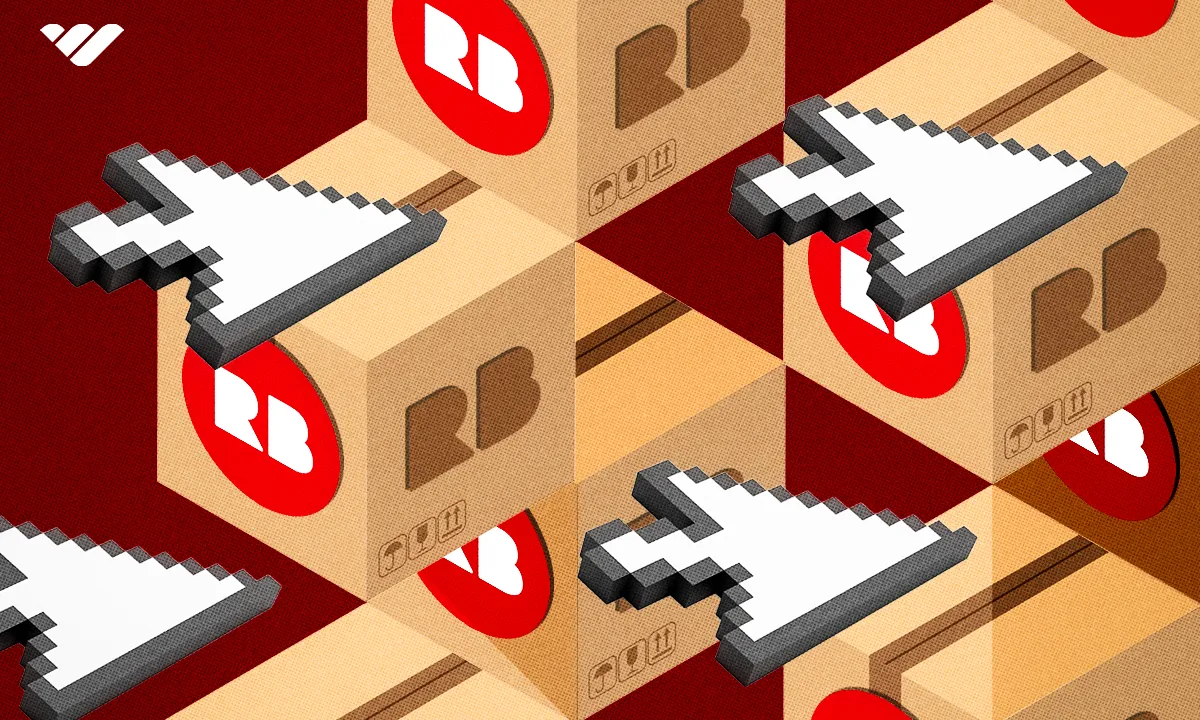Learn how to sell on Redbubble in just 3 simple steps. Start monetizing your art and designs by following this easy guide.
Key takeaways
- Redbubble handles production, packaging, and shipping, letting artists earn passive income with zero upfront costs.
- One design can be applied to over 70 products, maximizing sales potential without additional creative work.
- Optimize listings with keywords and buyer personas to stand out in Redbubble's 23 million monthly visitor marketplace.
With over a decade on the market, Redbubble is one of the leading print-on-demand (POD) marketplaces out there.
For designers and artists hoping to make money from their work, selling on Redbubble can be lucrative. Almost 700,000 independent designers and artists already submit their works of art to the website, so they can connect to any of their fans around the world. Thanks to Redbubble, it has never been simpler to sell art from the comfort of your home.
In this guide, we'll lead you through every step of how to sell on Redbubble, from creating an account to making your listings as sales-oriented as possible.
Why Use Redbubble for Print on Demand?
One of the most challenging things for an artist is to launch their own store, while all your attention should be on making new designs. Beyond that, anything more could seem like extra labor.
If you're wondering how Redbubble is a good option for you, here are a few reasons you might find it interesting:
It has a popular online marketplace
With a large organic reach, Redbubble receives a lot of traffic from search engines. Currently, it appears to be the most effective and user-friendly method for getting your ideas in front of Google users for free.
From May to July 2024, Redbubble had over 23 million visits, which means you also have a large audience you can leverage for sales. So it's comparable to other online marketplaces like Etsy, Printful, or Printify, in that artists can make a living off their original works without spending much time or money on marketing.
You can earn passive income
Since you can upload your designs on RedBubble for free, you can earn a flexible passive income. Plus, there are no subscription fees for Redbubble, you’re only charged when you make a sale. In addition, there are no transaction or membership fees for the service.
In fact, the average monthly salary for an artist on RedBubble in the US is roughly $3,000, which is 17% more than the average income.
All you have to do is simply upload your designs to Redbubble's marketplace and choose if you want your design to be printed on any of their products. Once you receive orders, Redbubble will take care of the production, packaging, and shipping. So, you only have to put in effort to create and sell those designs, which can be easily handled.
There are no upfront costs
You might be thinking, “How much does it cost to sell on Redbubble?” Redbubble doesn’t charge any up-front fees when using the platform for selling designs. You can earn income on the marketplace by receiving a commission on sales or a predetermined profit margin. Sellers can alter their customary 20% profit margin, which gives them more authority over the price of their products. Redbubble's fees can be quite complicated, as they include an account fee based on how much you earn, taxes, and any add-ons. Read the fee table to find out more.
If you want to develop a brand or sell high-end artwork or photography, you might find Redbubble to be useful.
How Do Artists Sell With Redbubble?
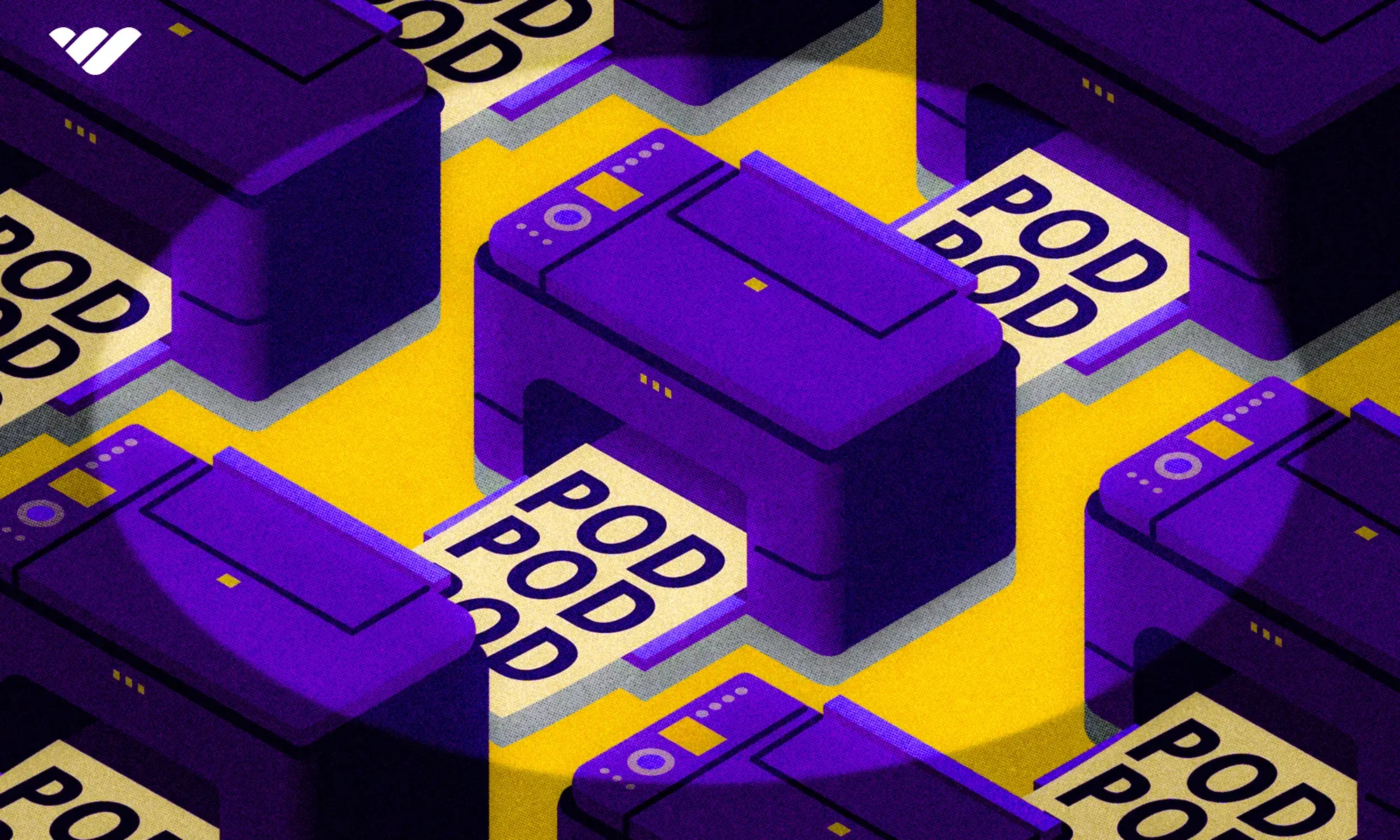
Similar to other print-on-demand platforms, Redbubble allows you to upload your designs so you can print them on the products available on the site. However, everything you sell is listed on Redbubble's online marketplace, unlike certain other print-on-demand services.
You can put your designs on a variety of products, such as phone covers, mugs, and t-shirts. By using the mockup generator, you can select the products you want to apply your designs to and see how they will appear. It’s simple to make adjustments to ensure your designs fit properly on each product.
After your product is done, you can easily reach clients without spending money on marketing since you sell on a dedicated marketplace. However, Redbubble does not offer a way for you to integrate with Shopify or other ecommerce platforms.
Important note: You need to be at least 16 years old to sell on Redbubble, and you can’t promote any explicit material.
What Products Does Redbubble Offer?
The product catalog on Redbubble is fairly diverse, so you can generate sales on over 70 products on the marketplace with just one design.
You have more chances of making sales by increasing the number of things you can customize with each design. Let’s look at some of the products that you can print your designs on.
Most popular products on Redbubble:
- Stickers
- T-shirt & hoodies
- Phones cases
- Artwork or other prints
- Mugs
Although these are a few popular options, they can change due to time and consumer trends. So, it’s important to keep in touch with what your customers want.
Other products offered by Redbubble:
- Bags
- Magnets
- Backpacks
- Socks
- Laptop cases
- Canvas prints
- Scarves
- Water bottles
- Posters
- Notebooks
- Journals
- Dresses
- Wall art
Now you know how it works and the products you can sell, let’s look at setting up a store. It’s a rather simple process to create an account, and we’ve gone through all the steps on how to sell on Redbubble.
Setting up a Redbubble Store in 3 Steps
Fortunately, it's not too hard to launch your Redbubble store and begin selling print-on-demand products. You can launch your Redbubble store for free and get it up and running quickly.
Here's how.
Step 1: Create your artist profile
The first thing you have to do is fill out your personal information online and create your account. There are two account-type options available to you: one for artists and another for customers.
If you want to upload and sell your creations, you need to create an artist account. Depending on your artist activity, sales, and following, you’ll be put into one of the following account tiers: Redbubble Standard, Redbubble Premium, or Redbubble Pro. So, make sure you find out which tier you’re in and see the terms and conditions that apply to you.
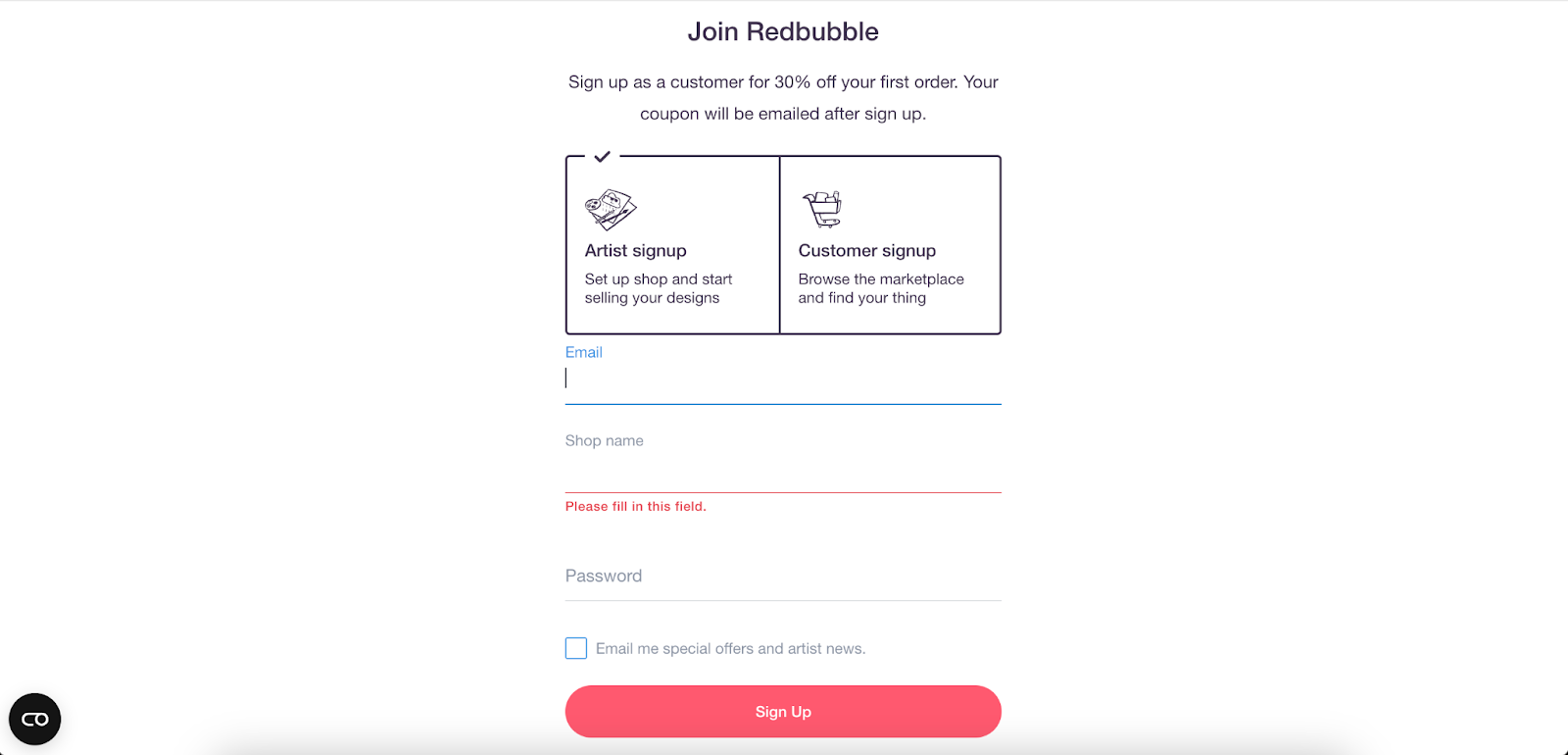
You'll be introduced to the dashboard below once you’ve signed up using your store name. Remember to make a good impression to give your customers a somewhat personalized experience.
You have to start with a strong artist bio, which can be a condensed version of your CV. It’s also a good idea to share your profile on social media platforms, so your followers can visit your website or follow you.
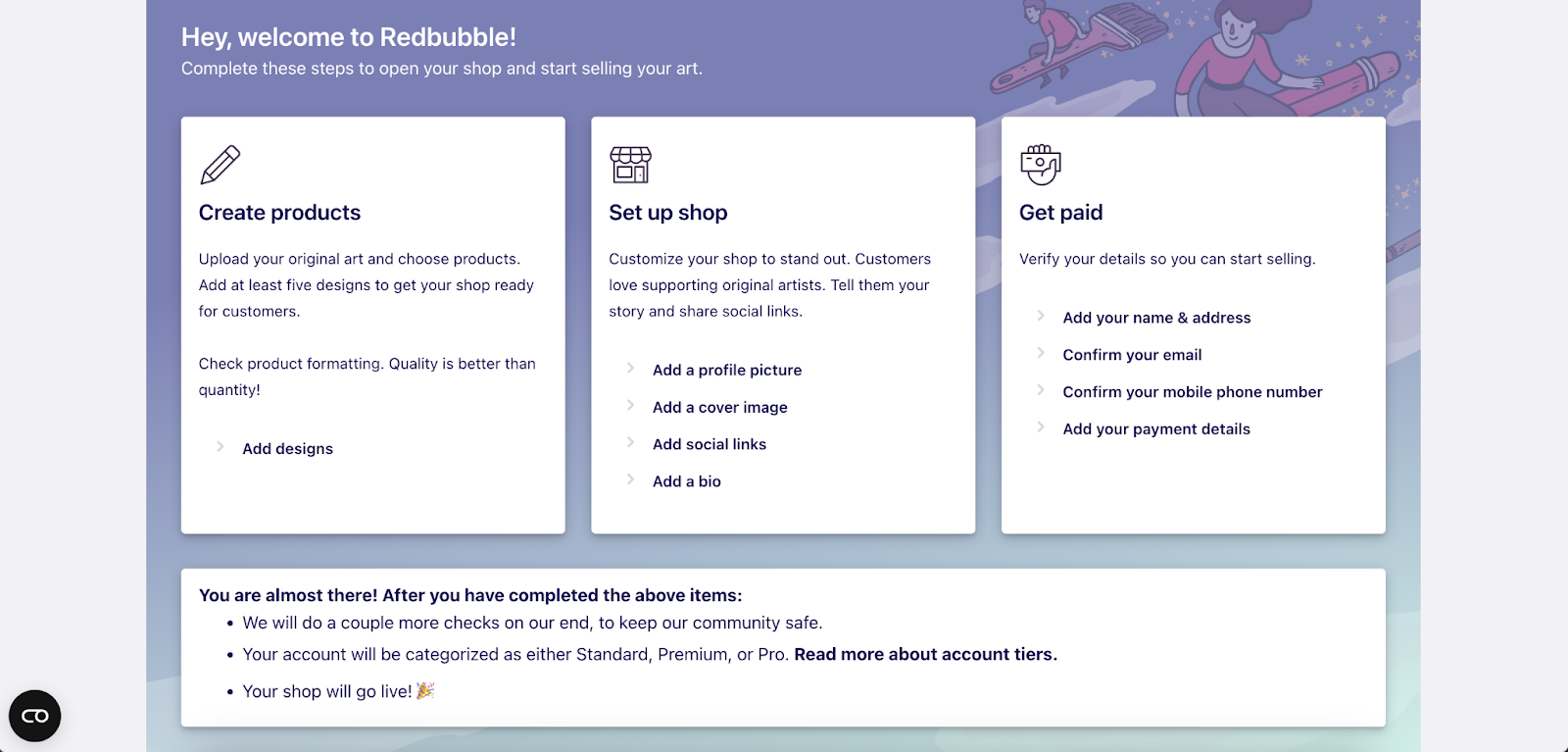
Your bio should give followers an overview of who you are, the kind of work you do, and the subjects or themes you are interested in. They should be inspired to browse your store, take an interest in your creations, and follow you.
You should also include an eye-catching image that best represents your brand as your profile picture and your cover photo. So, try out as many photo options to determine which one best fits your profile.
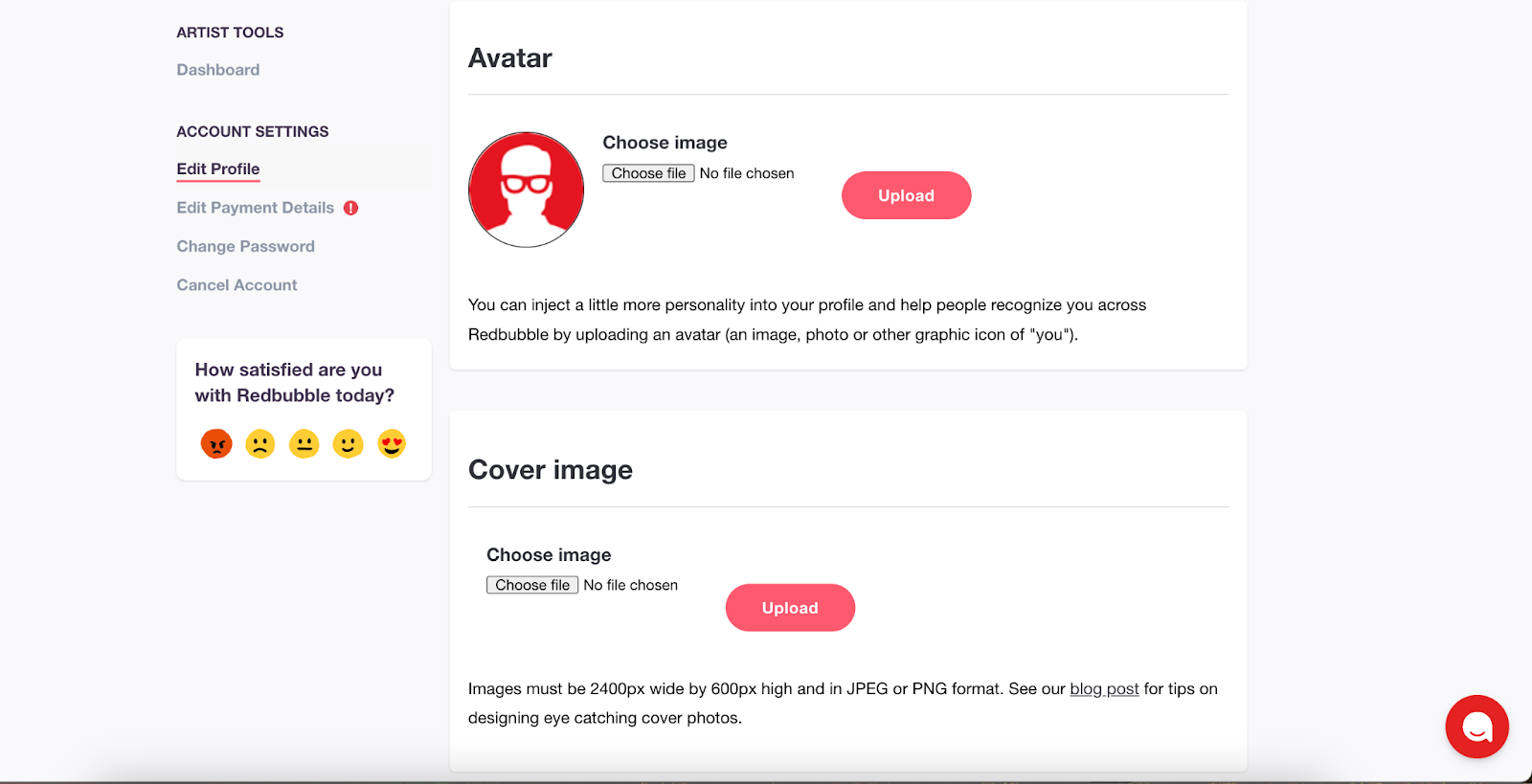
Step 2: Enter your payment details
To get paid you must first verify your email address, providing your residential address, and selecting the currency when filling out the payment details. Once you’ve put in that information, you'll be able to choose between using PayPal and your bank details for a direct transfer.
Redbubble will not charge you extra for any reason, but you must get to $20 in royalties before you can get paid into your PayPal account. Remember your bank or PayPal account will have to be verified first - your products can’t be sold without payment information.
When you’ve completed the form, you will be prepared to receive payment the way you choose!
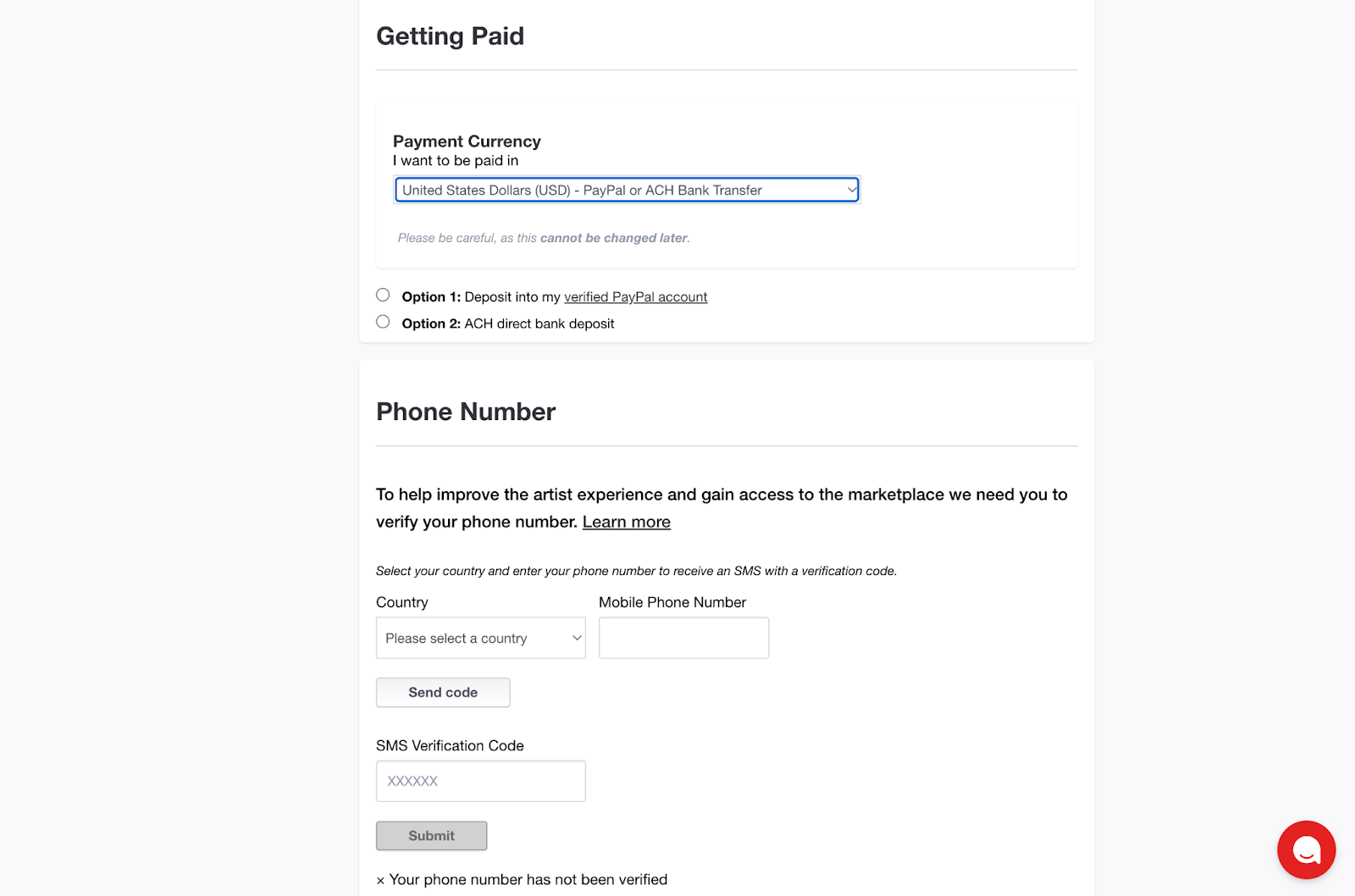
Step 3: Upload your artwork
To upload a new design, go to the top right corner of any page, click your avatar, and then select "Add New Work" to start creating your first product.
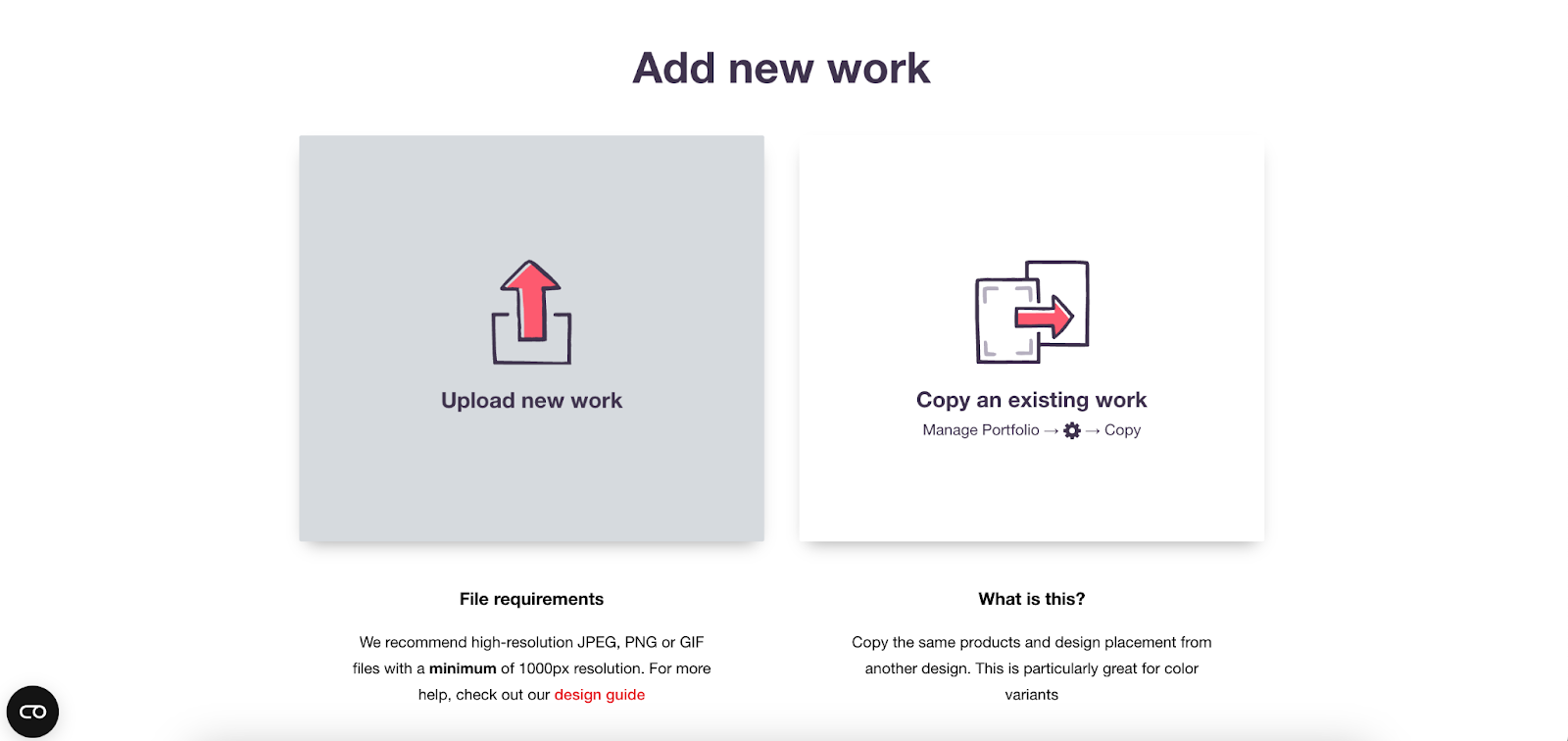
By selecting "Upload new work", you can upload a a JPG, GIF, or PNG file with a minimum resolution of 1000 x 1000 pixels; however, for most flexibility, we recommend 5000 x 5000 pixels or something similar.
For our example, we’ve just used an image from Van Gogh’s famous Starry Night painting, but make sure it’s your original artwork (you’ll have to agree to these terms and conditions at the bottom anyway).
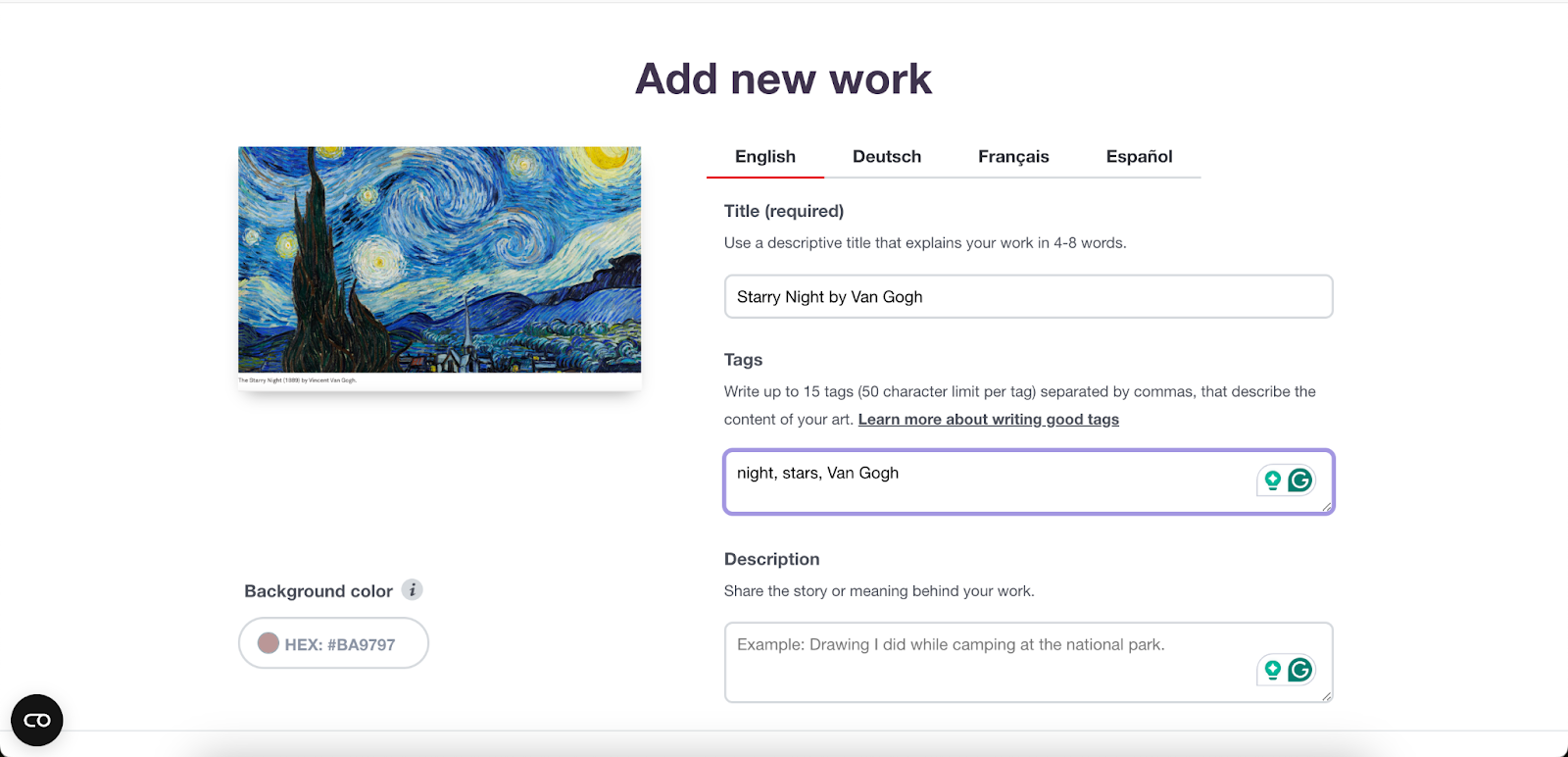
You can then choose your title, write a description, select the default product you want to see in your shop, change the background color, disable or enable products, and add the design to multiple items.
After completing the task, navigate to the bottom of the page and fill in the rest of the information. You’ll have to pick what media category you uploaded, the product you want to choose, and whether the content is mature or not.
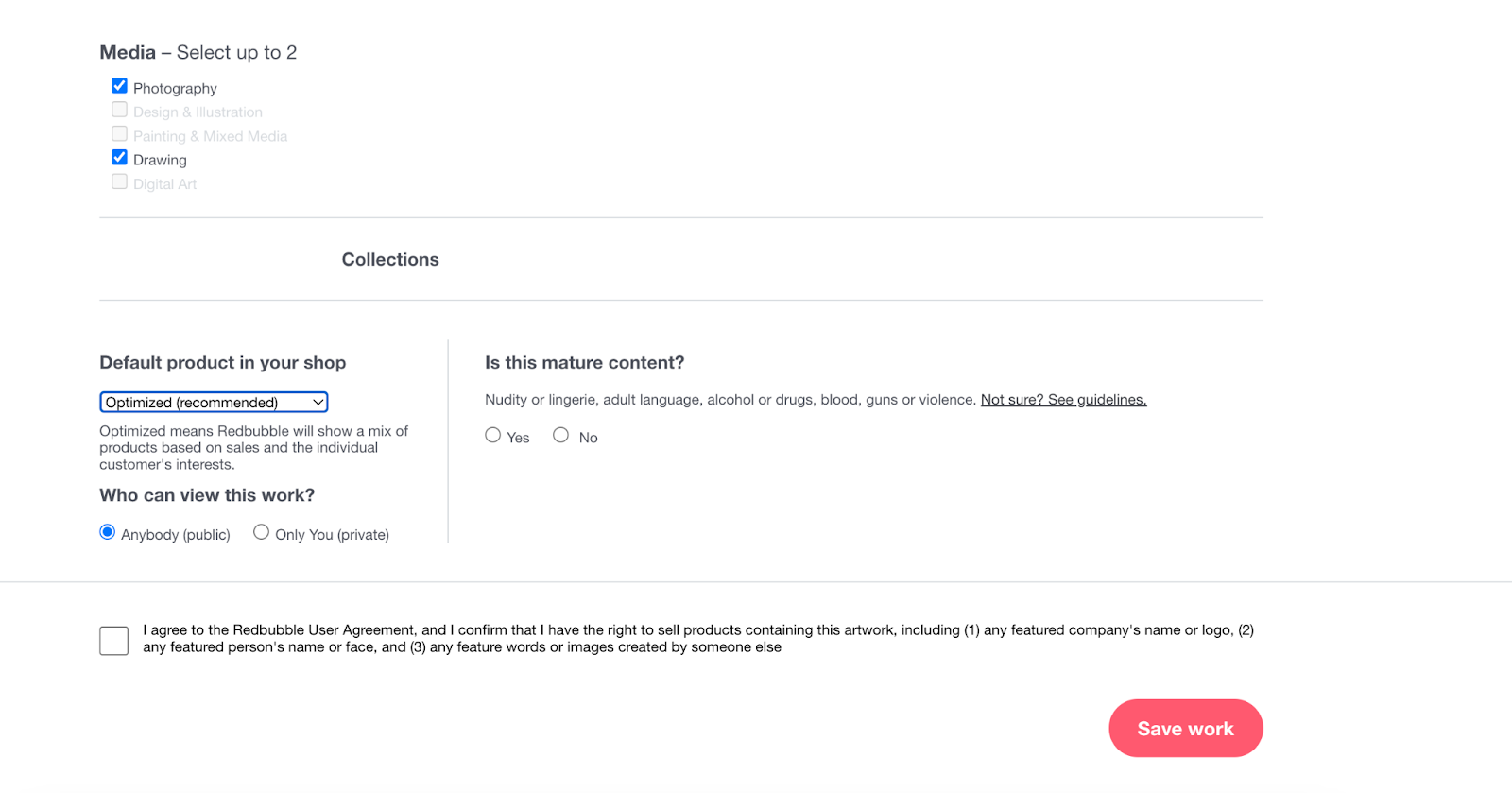
And that’s it! Once you’ve saved your work, the product will be in your store.
If you’ve already uploaded a product to the website, you can choose to copy an existing work so that your new piece is identical to the previous listing you generated.
Next, choose the piece of work you wish to duplicate, then click the cog icon. Choose "Copy", then replace every image with the new layout. There is no more work for you to do because everything from tags to background color will migrate across seamlessly.
Now, it's time to start selling.
How to Sell on Redbubble: From Stickers to Tote Bags
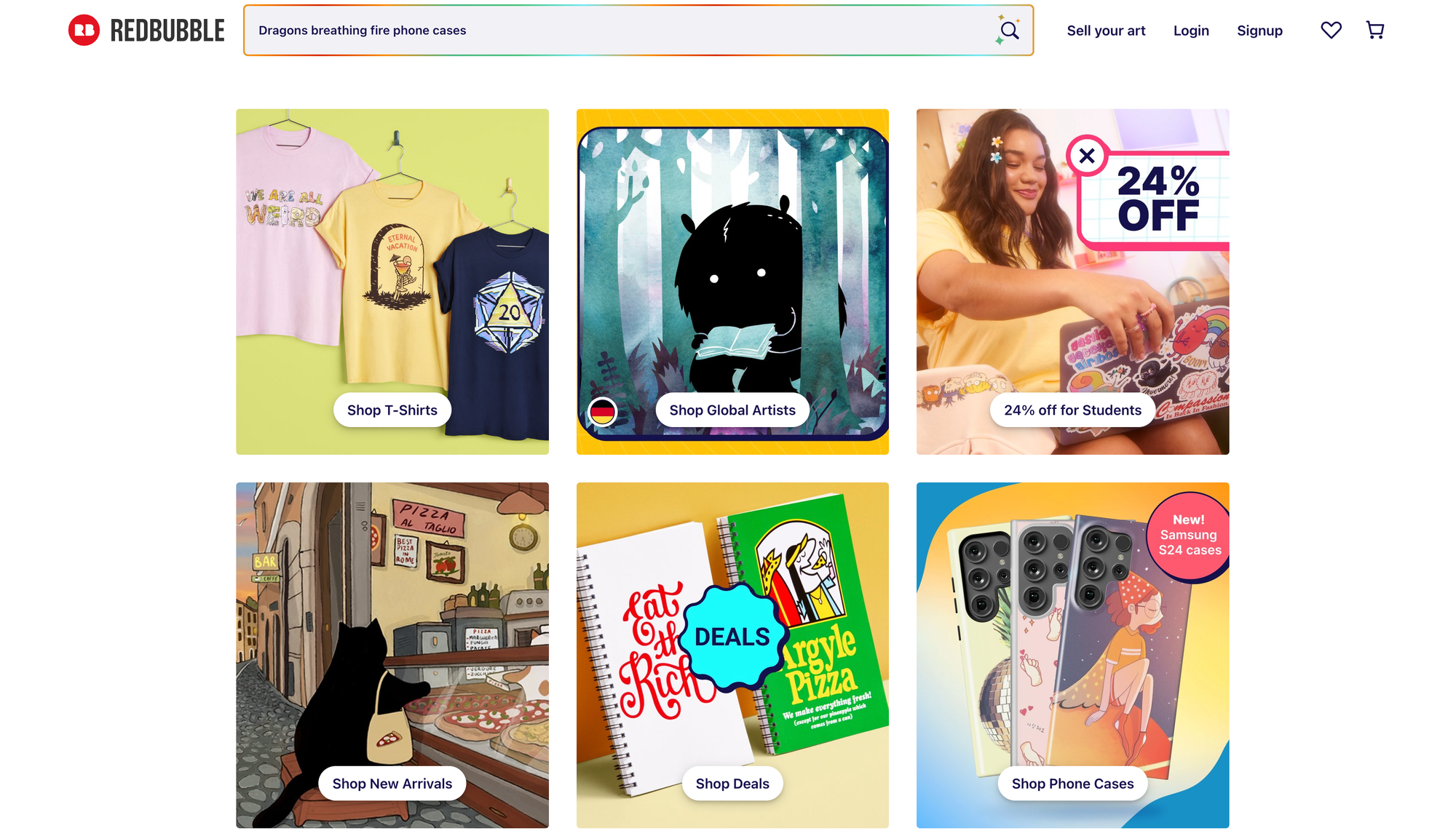
If you want to sell your art but don't want to bother with managing orders, interacting with clients, or overseeing the manufacturing process, then Redbubble is the right choice for you as it handles every little detail.
But, while you don't have to manage any of that, just setting up shop isn’t enough. You also need to leverage some sales techniques to get your product to the masses - you need to convince customers why they should buy your products.It doesn’t matter if you're selling stickers, tote bags, art prints, or mugs; we’ve listed out some strategies that will work for you regardless.
Create your customer persona
When you’re learning how to sell on Redbubble, you should put your customers first. To create marketing campaigns that are relevant to your target audience, buyer personas provide you with a deeper understanding of your customers' behaviors and shopping habits.
By developing buyer personas, you can communicate to your clients more clearly and intently. By having a thorough understanding of your audience, including psychographic and demographic information, you can better target your products, adjust your descriptions, and create items that will be sell successfully.
First, you can start looking at your current customers on your website and social media accounts and then move on to studying customers your market or industry peers target. This can complete your understanding of their purchasing habits and other traits, which will boost your marketing efforts.
Optimize your product listings with keywords
Since Redbubble already has an organic reach, using ranked keywords will help ensure that your products appear when someone searches for these terms.
The problem is figuring out what is ranking high and what to concentrate on might be difficult. If you want to increase your exposure on Redbubble, use resources like Google Keyword Planner or SEMrush for keyword research.
You should include high-volume keywords associated with your designs in the names, descriptions, and tags of your products. Be sure to include your primary keywords in your product titles and make them clear. For example, we included “night”, “stars” and “Van Gogh” for our artwork. Don’t forget to include secondary keywords in your descriptions to highlight your design features.
If you want your designs to be found, make sure your tags appropriately represent the artwork you've created. You can mix general and targeted tags to improve your visibility, but refrain from using too many or unnecessary ones. There’s also an option to add more tags from the platform’s relevant searches section below. You can also look up your keyword on Redbubble and see what tags the most popular designs are using. You might find something you overlooked.
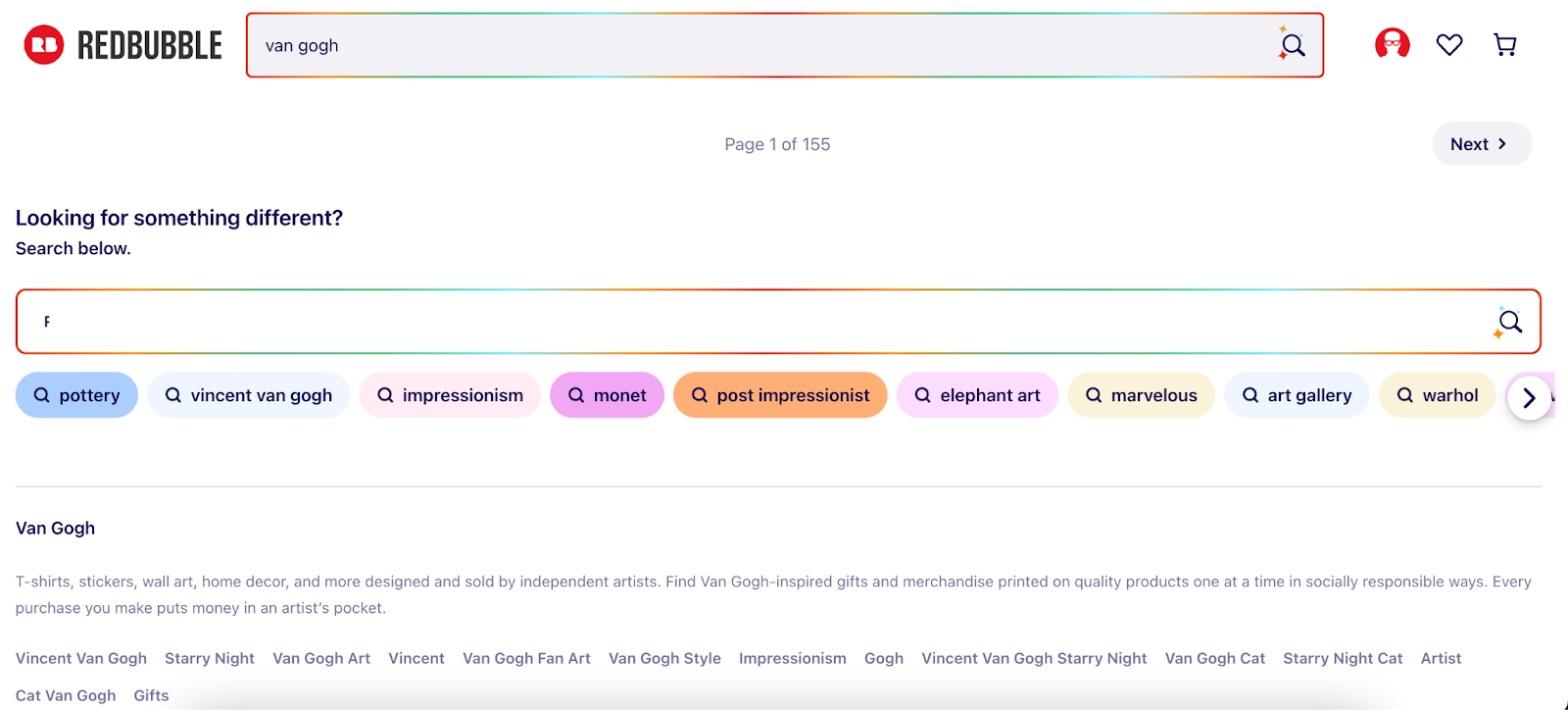
To ensure your designs remain current, make sure you're coming back and upgrading your tags (be careful to not include any copyrighted language!).
Offer a diverse range of products
When you have a wide range of products available in the same design, you have the chance to sell more. While you might not believe there's much likelihood of someone wanting your design on a scarf, it does happen.
It doesn’t hurt to spend a few extra minutes adding the things you don't believe will ever sell. Plus, the products you make will remain on Redbubble for as long as you want and it won’t cost you a dime until it’s sold.
More products also mean more product photos that Google can index, so it could result in greater traffic and sales for your designs.
Place similar designs in a collection
You can create themed collections to generate interest and draw in the kind of consumer you want to keep buying from. Think of an animal, holiday, or even a specific color-themed collection.
For instance, we could curate a collection about Van Gogh on Redbubble since we want to keep our concept or art style consistent. This means that consumers aren’t exploring other platforms in search of similar designs and you’re maintaining your aesthetic across all channels.
Market your products on social media
One of the best ways to drive potential buyers to your Redbubble store is to share your designs on social media. You can include a link to your Redbubble page on social media sites like Facebook, Instagram, and Twitter/X.
Think about posting pictures of your designs and include relevant hashtags to make your posts more visible. You'll want to include more specific information depending on the platform you market on, though. Here's an overview of selling on some popular social media platforms:
Pinterest is a great platform to share your Redbubble designs on since it lets you share images with links to other websites. You can also create and manage photos according to themes with its pinboard-style sharing. This way, you can connect with people who share your passions by making and posting Pinterest boards that feature pictures and descriptions of your products.
Since you can link Redbubble to Pinterest, it’s easier to share your designs by clicking the "Pin It" button on your creations. From your dashboard, you can also share your full lifestyle template. Simply go to your Dashboard, select "Share your work," and then pick the download option.
TikTok
If you already have a TikTok account for your business, add your Redbubble shop's link to your bio. Customers who are interested in your products will be sent to your store immediately.
You can create videos that showcase your designs or even walk your viewers through the design process and final product. Try to use engaging descriptions, eye-catching effects, and a trending sound as the background track. Don’t forget to put in trending hashtags with a call to action.
By identifying competitors and following users who express interest in you, you can easily increase your visibility more quickly and connect with interested customers.
Start by making an Instagram account for your business, in case you haven’t already. If you want to promote your Redbubble store, use professional mockups, as they highlight the aesthetic appeal of your designs.
You should also post often and determine the ideal time to publish on Instagram depending on when your customers are most active. This would attract a larger audience and a greater number of followers who are enthusiastic about your posts, designs, and products.
You’ll also need to choose the right #hashtags for your posts; use a few relevant ones so that people who might be interested in your products or services can discover you! (Sound familiar?) You can look through accounts similar to yours to find the hashtags they use.
Blogs
If you already have your own website, linking your Redbubble shop to your blog entries might make perfect sense. Make sure to use relevant keywords to link to a design, so that Google elevates the ranking for your Redbubble design page. This increases Google traffic to the design's page, which boosts sales, which in turn causes Redbubble to boost your design in its won rankings, resulting in even more sales.
As an artist or design professional, you can also share insights with other like-minded individuals while promoting your Redbubble shop. The best way to do so is by creating an email list.
You can send out frequent email newsletters to your subscribers that highlight new designs, special offers, or behind-the-scenes glimpses into your products. This allows you to directly engage with your audience so you can develop a better relationship with them. Also try using opt-in forms on your other social media accounts and Redbubble shop for people to subscribe to your email list. By segmenting your email list according to your customer preferences, you can create specific email campaigns for various product categories or niches.

Although Redbubble offers you many options to market and create your designs, it might not be the best choice for everyone. It also doesn’t integrate with other websites and online marketplaces, which can make it harder for people who want to establish a brand.
That’s why we’ve included a few alternatives to Redbubble you can take a look at.
Is Redbubble the Best Choice for You? 3 Redbubble Alternatives
With a large selection of print-on-demand products, Redbubble offers artists a way to show off their designs and earn money. So, it can be a reliable source of passive income if you make your designs visible to search engines and market your products.
However, it can be difficult to make those initial few sales—or even consistently sell anything. So, here are some other print-on-demand services you can explore:
1. Printify
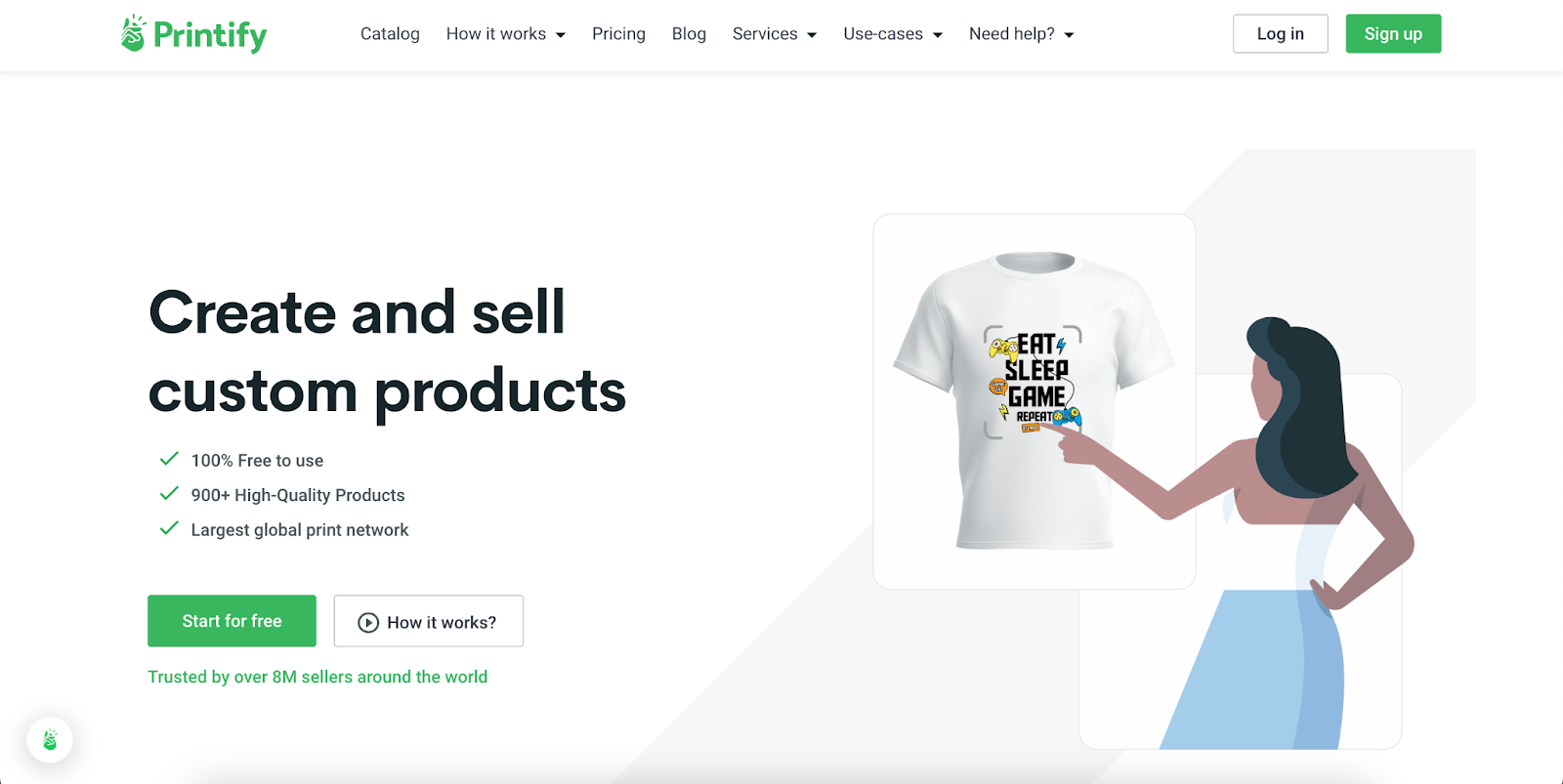
Online retailers mostly use Printify to offer personalized print-on-demand goods. You can quickly add a variety of customized products to your online store and have Printify handle order processing, printing, packaging, and shipping. It also has a Pop-Up Store option, which enables you to establish a free, stand-alone print-on-demand store, even if it is basic.
You have to choose from Printify’s three plans to start selling your products. However, the only difference between them is that you can get a bigger discount and more stores per account if you level up to another plan. Otherwise, you can create an infinite number of products and add all ten of Printify's ecommerce integrations.
However, you’re also subject to subscription and add-on services like personalized branding, Printify Studio, and consultations, depending on what you choose.
2. Printful
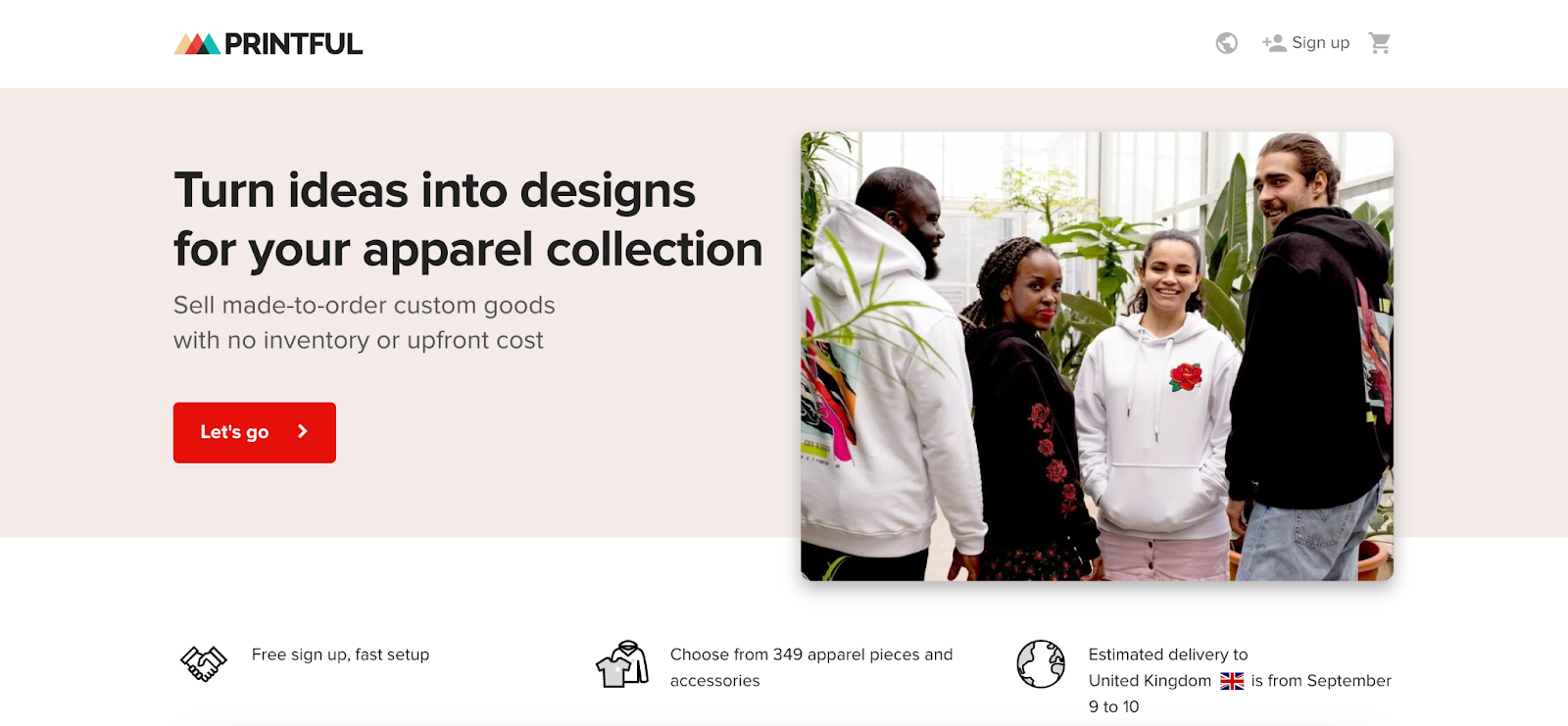
Launched in 2013, Printful offers a far wider selection of customizable POD products (almost 350) in its product inventory. Compared to Redbubble, it has a far superior product design tool that allows you to create "premium" product customizations thanks to its wider selection of print and finishing techniques. You can even apply specific branding to your products and packaging.
You’re also not limited to the site. You can sell Printful products almost anywhere because of its integrations with most of the well-known ecommerce platforms. Whether your goal is simply to display products on your own Squarespace or Shopify store or to sell them on massive markets like Amazon and Etsy, Printful can help you do it all.
There’s no cost to setting up your account. All you have to do is sign up, but there are some additional fees you might need to be aware of if you want to improve your products with the likes of premium images, printed apparel tags, and embroidery.
3. Gelato
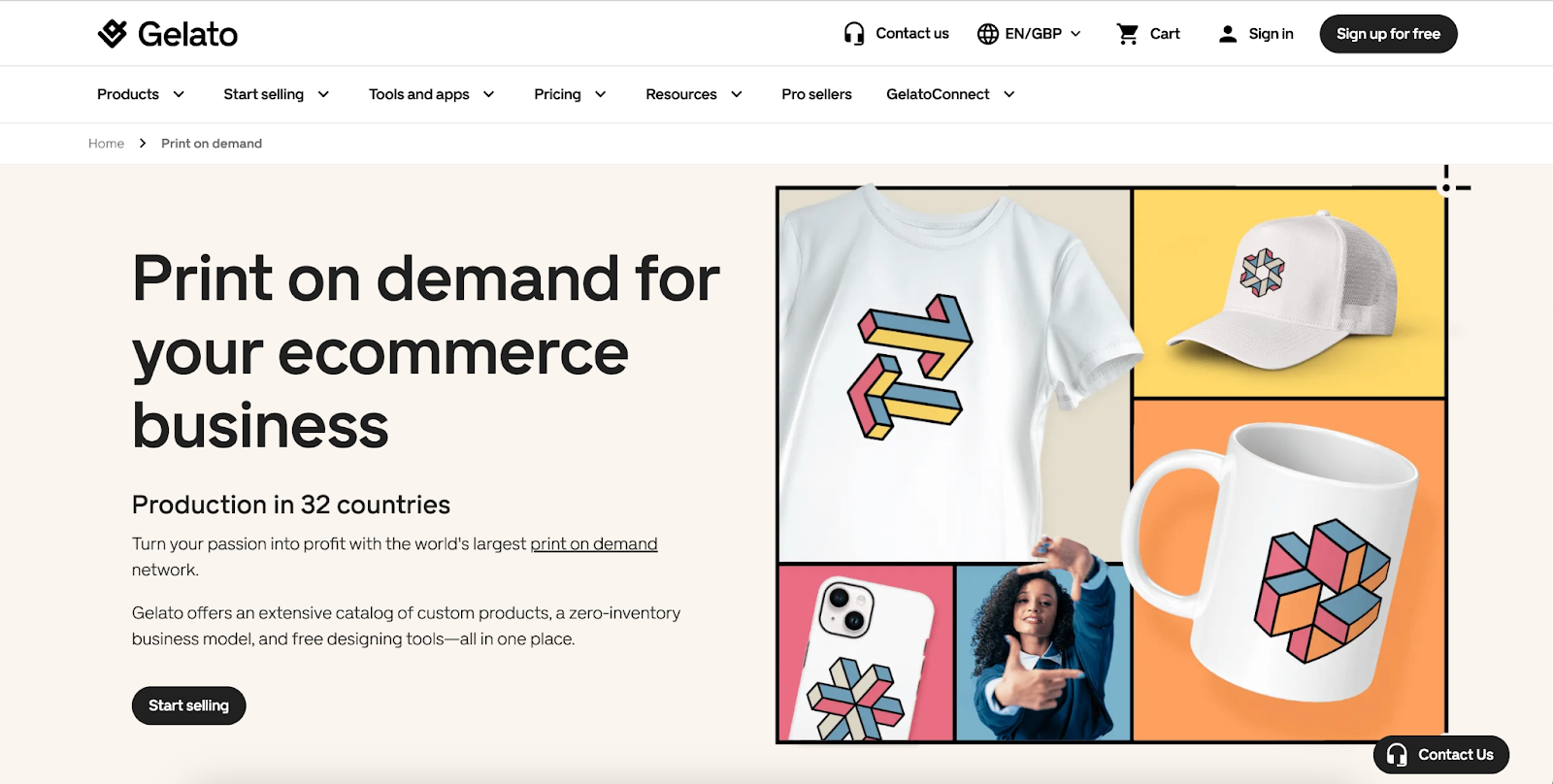
Starting a Gelato POD business doesn't require any upfront expenses because the product is only produced and shipped in response to orders. If you’re looking to get creative with your products, Gelato guarantees superior print quality and provides a wide range of paper stocks and finishes.
Gelato primarily functions as a print-on-demand service with integrations into well-known ecommerce websites like Shopify, WooCommerce, and Etsy. You can easily allow users to integrate print-on-demand services into their current web storefronts, even if it doesn't operate as a stand-alone marketplace for direct product sales.
As you can see, each POD service offers an array of features that are intended to improve your printing experience, regardless of whether you’re a giant corporation or a small business just starting in ecommerce.
Regardless of the platform you choose, the goal is to provide customers with a smooth, personalized, and unforgettable experience.
Find More Ecommerce Advice and Education on Whop
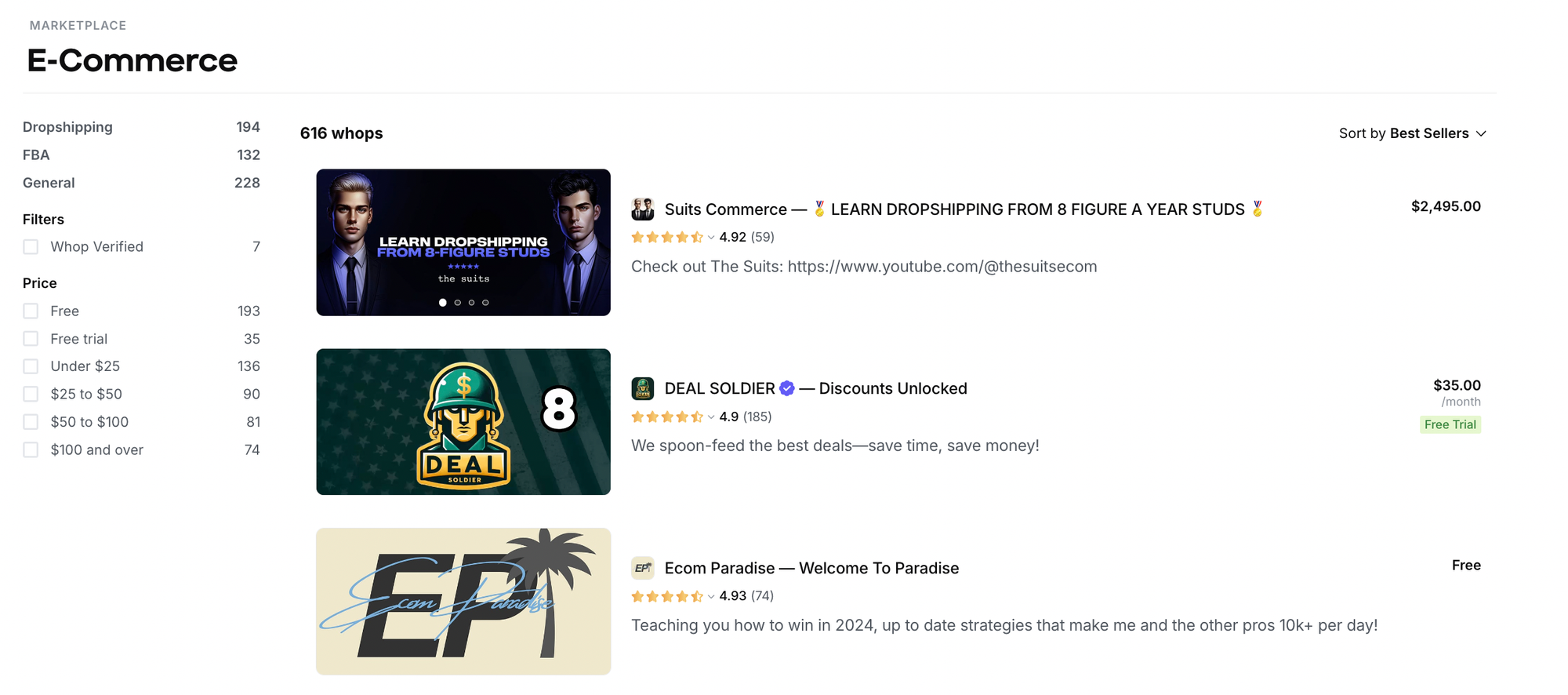
It’s not easy setting up your own print-on-demand store. You need to do extensive market research, choose where you want to host it, create social handles, and the list goes on.
At times, it can get overwhelming to sweep through the sea of information available on the internet as well. That’s where online communities and courses can be invaluable. Whether you’ve been in the business for year or are an ecommerce novice, you can find a treasure trove of tips and tricks to make sure your online store is a success.
All you have to do is visit the Whop marketplace and explore the ecommerce category. There you can find ecommerce-focused communities where industry experts share their tips and tricks of the trade with others, online courses that you can take to learn the ins-and-outs of ecom, and even online coaching for a really hands-on educational experience. There is something for everyone, of every skill level.
FAQs
How can you sell art on Redbubble?
If you’re planning to sell your art on Redbubble, you have to create an artist account on the site. Once you’ve done that, put in your profile and payment details. Then you can start uploading your art to the site and choose what product you want to print your design on. Don't forget to promote your art on your social media platforms to help make some sales.
How can you sell stickers on Redbubble?
To sell stickers on Redbubble, you must first sign up for an account and upload your designs. One of Redbubble's best-selling products ever is stickers, so it’s a good idea to design them. For your sticker to be cut into the desired shape, make sure the design file is saved in PNG format and has a transparent backdrop. Once your design is approved, you can start choosing how it’ll be printed and what finish it should be. You can then start marketing your stickers on any channel you can think of, including your Redbubble shop.
How much does it cost to sell on Redbubble?
It doesn’t cost you anything upfront to start selling on Redbubble; you aren't charged anything unless you’ve made a sale. You’ll be compensated for your profit margin when a design is sold, but you’ll only receive payments when you’ve made at least $20. Depending on your account tier, you may also have to pay a monthly fee for your storefront.
Does Redbubble print for you?
No matter what design you have, you can print on any product within the Redbubble catalog. The website works with third-party manufacturers and shipping services to ensure your orders are printed and then sent to your customers. It’ll take around 2-3 days to print your products and deliver them after the order is placed.
How often does Redbubble pay you?
If your payment method has been verified and you’ve made at least $20/£20/€20, you are eligible to be in the payment cycle, which starts at the beginning of the month. By the 15th of the month, you’ll have your earnings in your account. However, if you’ve set up your shop after the 1st, you have to wait until the next pay cycle.
There’s also an annual payout that happens in January every year. This is applicable for those who’ve reached the $20 mark or made at least $2/£2/€2 by the end of the previous year. It follows the same rules as before, where you’ll get your money by the 15th.

